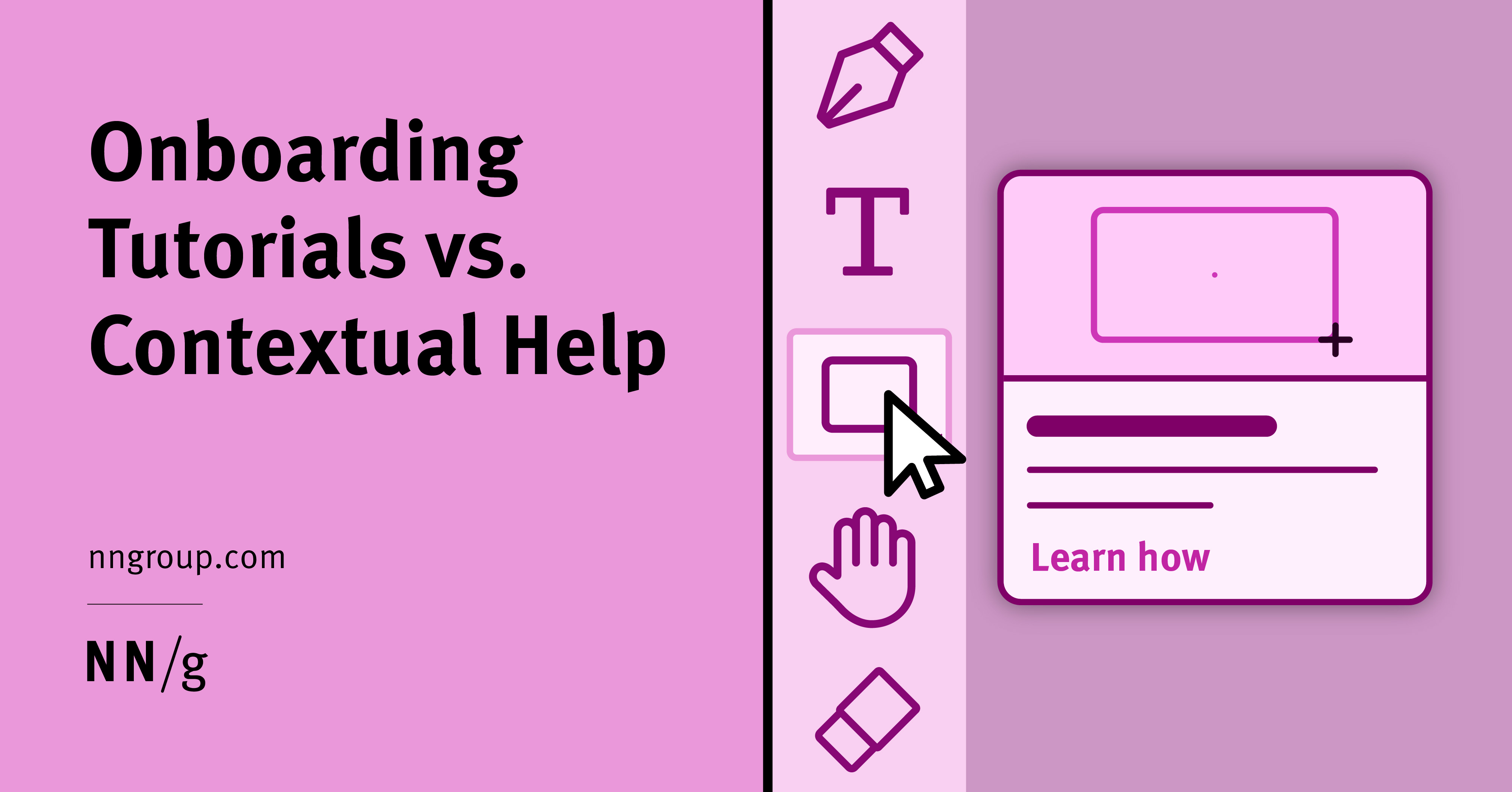Effectiveness of Tutorials vs. Contextual Help in Apps
Khái niệm cốt lõi
Tutorials often disrupt users and are easily forgotten, while contextual help can provide better assistance without interruptions.
Tóm tắt
Tutorials in apps can be disruptive, easily forgotten, and not always effective. Contextual help offers a more efficient way to guide users without interrupting their tasks. Push revelations lack context and can be intrusive, leading to user frustration and inefficiency. Pull revelations, triggered by user actions, offer a more effective approach to providing assistance in-app.
Onboarding Tutorials vs. Contextual Help
Thống kê
"Intrusive tutorials and lists of changes that are shown when an app is launched or at random points during the user’s session are a type of push revelation."
"Push revelations reveal new information out of context, without any specific indication that the user would benefit from the information at that moment."
"Both struggle with similar problems: they interrupt users who are attempting to do something else at that moment, they don’t tend to be memorable, and they also don’t result in better task performance."
"Users want to start using the product right away. They don’t want to spend time studying how to use your app."
"The interruption posed by a tutorial is unwanted, so users skip it."
"Pull revelations are help content triggered by some signal that the user would benefit from that information at that moment."
"Determining the user’s goal is relatively straightforward in some situations — for example if the user hovers over a new toolbar icon, it’s appropriate to show them a tooltip or an instructional overlay."
Trích dẫn
"No matter how well-designed your tutorial is if it interrupts users during their tasks or doesn't provide relevant information when needed, it's ineffective."
"Contextual help respects users' time and provides guidance only when necessary, enhancing their experience without causing disruptions."
Thông tin chi tiết chính được chắt lọc từ
by Page Laubhei... lúc www.nngroup.com 02-26-2024
https://www.nngroup.com/articles/onboarding-tutorials/
Yêu cầu sâu hơn
How can app developers balance providing helpful tutorials without disrupting users' workflow
To balance providing helpful tutorials without disrupting users' workflow, app developers can implement a combination of strategies. Firstly, they should consider the timing and context in which tutorials are presented. Instead of interrupting users during critical tasks, tutorials could be offered as optional resources that users can access at their convenience. This way, users who prefer guidance can seek it out without being forced to engage with it when they are focused on completing a task.
Moreover, developers can utilize interactive elements within the app interface that offer contextual help based on user actions or queries. By incorporating tooltips, coach marks, or task-flow wizards triggered by specific user interactions (pull revelations), developers can provide assistance precisely when users need it most. This approach ensures that help is available but not intrusive, enhancing the overall user experience.
Additionally, making tutorial content easily accessible through a dedicated Help menu or searchable knowledge base allows users to refer back to instructions whenever necessary without having to rely solely on their memory. By offering multiple avenues for accessing guidance and support within the app interface while respecting users' workflow priorities, developers can strike a balance between providing valuable assistance and minimizing disruptions.
Is there a middle ground between tutorials and contextual help that could enhance user learning experiences
A middle ground between traditional tutorials and contextual help could involve integrating adaptive learning mechanisms into the app's design. By leveraging data analytics and user behavior patterns, apps could personalize the learning experience for each individual user based on their proficiency level and preferences.
For instance, an app could track how effectively a user completes certain tasks and adjust the complexity of tutorial content accordingly. Users who demonstrate mastery in one area may receive more advanced tips or challenges to further enhance their skills, while those struggling with particular features might benefit from additional step-by-step guidance tailored to their needs.
Furthermore, incorporating gamification elements such as quizzes or interactive exercises within the app interface can make learning more engaging and rewarding for users. By creating opportunities for hands-on practice in a supportive environment, apps can foster continuous skill development while keeping users motivated to explore new features and functionalities.
By combining personalized learning pathways with interactive engagement strategies, apps can create a dynamic educational experience that adapts to each user's unique learning style and pace effectively bridging the gap between traditional tutorials and contextual help.
How can AI-driven pull revelations be improved based on past failures like Clippy
Improving AI-driven pull revelations requires addressing key issues identified from past failures like Clippy in Microsoft Office assistant:
Less Intrusive Design: Developers should prioritize creating non-intrusive AI-driven assistants that blend seamlessly into the app interface without distracting or overwhelming users visually.
Enhanced Pattern Recognition: Utilizing sophisticated pattern-matching algorithms powered by machine learning technologies would enable AI assistants to accurately interpret user intentions based on context cues rather than relying on simplistic rule-based systems.
User-Controlled Activation: Giving users control over when AI-driven pull revelations are activated ensures that assistance is provided only when desired by allowing them to initiate interactions with virtual assistants through explicit commands or gestures.
Contextual Relevance: Ensuring that AI-driven pull revelations offer timely information aligned with current user goals by analyzing real-time interactions within the app enables more relevant suggestions tailored to individual needs.
5..Continuous Improvement: Implementing feedback loops where users can provide input on the effectiveness of AI-driven pull revelations helps refine algorithms over time based on actual usage data leading towards more accurate predictions of user intent.
By addressing these aspects proactively in designing AI-driven pull revelations applications have better chances of delivering valuable assistance seamlessly integrated into workflows enhancing overall usability experiences significantly compared previous flawed attempts like Clippy
0
